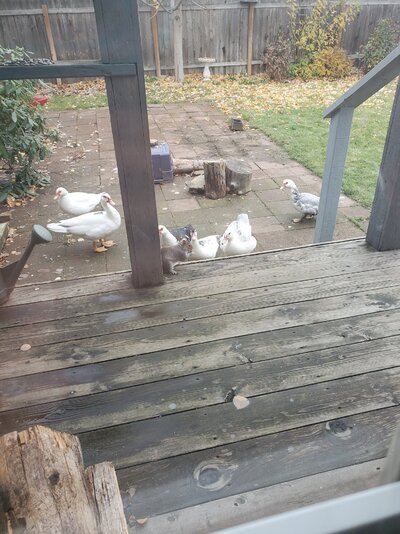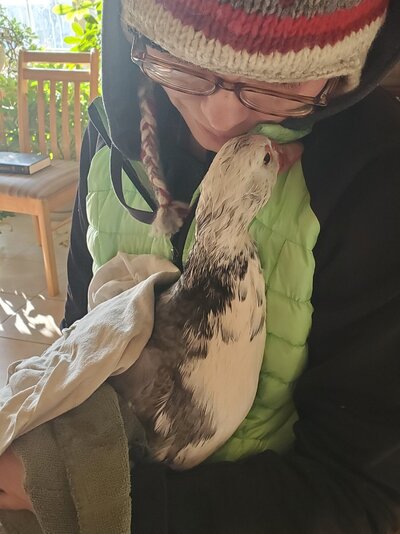Sharing in hopes it will help someone else. Last year at the end of summer I got a small flock of Muscovy ducks. Those of you who own Muscovies know that they are not as waterproof as other birds. My flock was mixed some were from one farm and had more of the domesticated colors and some were from another farm and had more of the wild coloring. My wild girls definitely had better feather quality. No questions about it.
My domestic girls were the first to develop wet feather. They survived most of the winter with good feathers, but as Spring neared their quality went down hill fast. I saw a pattern with all my girls, soon after they started laying, they developed wet feather. My domestic girls started laying a month before my wild girls and feather quality followed.
I love beautiful feathers and to see them looking like drowned rats all Spring was miserable for me. After so many weeks of wet feather, the feathers themselves lost their shine and started to lose quality quickly. I eagerly waited until their annual molt thinking that I would start all over at square one with new beautiful waterproof feathers. Well, I got the new beautiful feathers, but they were not waterproof from day one. Which makes sense. Every bath the new feathers were soaked and the birds were dripping wet.
Desperate for a remedy, I upped their BOSS intake (Black oil sunflower seeds). Previously I'd been feeding my flock of 6 about a half cup twice a week. Now I started feeding them one cup a day. Scattered on the patio instead of in their feed as I'd done before. And let me tell you, not only do they gobble them up everyday, but I have seen huge improvements in the quality of their feathers. We have been dealing with winter snow and rain and instead of looking like drowned rats, they still look like beautiful ducks with the water beading up and running off. It's still not perfect, I think that's just part of being a Muscovy. But to keep their feathers in tip top shape is so important. Not just for looks, but for the health of the birds. The other thing I noticed is that when they preen the are rubbing their oil glands again. They haven't done that in months and months. I'm so happy. Hoping this can help someone else who is dealing with these issues.
My domestic girls were the first to develop wet feather. They survived most of the winter with good feathers, but as Spring neared their quality went down hill fast. I saw a pattern with all my girls, soon after they started laying, they developed wet feather. My domestic girls started laying a month before my wild girls and feather quality followed.
I love beautiful feathers and to see them looking like drowned rats all Spring was miserable for me. After so many weeks of wet feather, the feathers themselves lost their shine and started to lose quality quickly. I eagerly waited until their annual molt thinking that I would start all over at square one with new beautiful waterproof feathers. Well, I got the new beautiful feathers, but they were not waterproof from day one. Which makes sense. Every bath the new feathers were soaked and the birds were dripping wet.
Desperate for a remedy, I upped their BOSS intake (Black oil sunflower seeds). Previously I'd been feeding my flock of 6 about a half cup twice a week. Now I started feeding them one cup a day. Scattered on the patio instead of in their feed as I'd done before. And let me tell you, not only do they gobble them up everyday, but I have seen huge improvements in the quality of their feathers. We have been dealing with winter snow and rain and instead of looking like drowned rats, they still look like beautiful ducks with the water beading up and running off. It's still not perfect, I think that's just part of being a Muscovy. But to keep their feathers in tip top shape is so important. Not just for looks, but for the health of the birds. The other thing I noticed is that when they preen the are rubbing their oil glands again. They haven't done that in months and months. I'm so happy. Hoping this can help someone else who is dealing with these issues.





